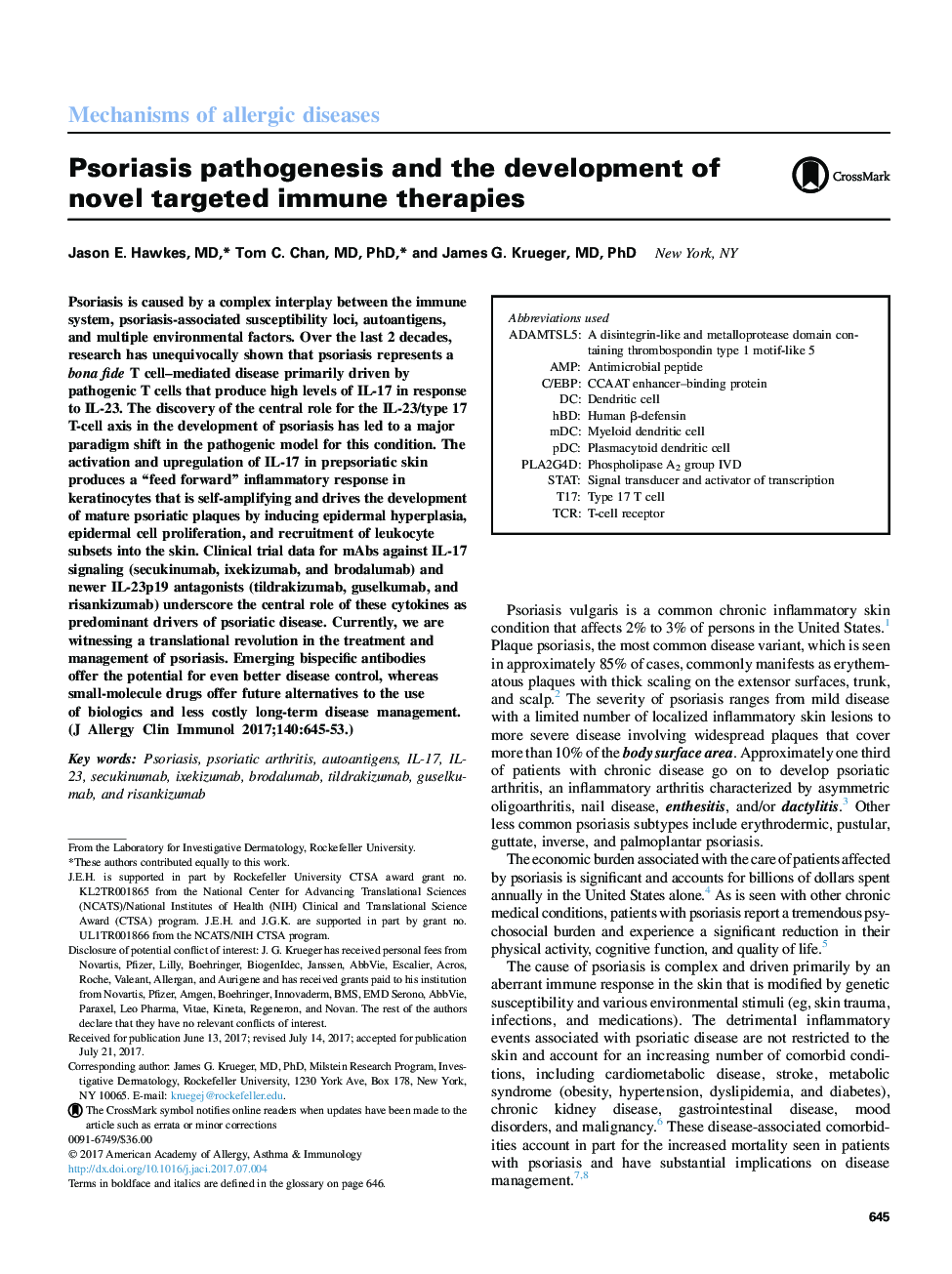| کد مقاله | کد نشریه | سال انتشار | مقاله انگلیسی | نسخه تمام متن |
|---|---|---|---|---|
| 5647046 | 1407076 | 2017 | 9 صفحه PDF | دانلود رایگان |
عنوان انگلیسی مقاله ISI
Psoriasis pathogenesis and the development of novel targeted immune therapies
ترجمه فارسی عنوان
پاتوژنز پسوریازیس و توسعه جدید درمان های ایمنی هدف
دانلود مقاله + سفارش ترجمه
دانلود مقاله ISI انگلیسی
رایگان برای ایرانیان
کلمات کلیدی
PDCBrodalumabsecukinumabIL-23autoantigensIL-17MDCTCrHbdAMPC/EBP - C / EBPhuman β-defensin - β-defensin انسانpsoriatic arthritis - آرتریت پسوریاتیکSTAT - آمارIxekizumab - ایکسژیزمبDendritic cell - سلول دندریتیکPlasmacytoid dendritic cell - سلول دندریتیک پلاسماییکوئیدMyeloid dendritic cell - سلول های دندریتیک میلوئیدSignal transducer and activator of transcription - مبدل سیگنال و فعال کننده رونویسیPsoriasis - پسوریازیسAntimicrobial peptide - پپتیدهای ضدمیکروبیT-cell receptor - گیرنده لنفوسیت T
موضوعات مرتبط
علوم زیستی و بیوفناوری
ایمنی شناسی و میکروب شناسی
ایمونولوژی
چکیده انگلیسی
Psoriasis is caused by a complex interplay between the immune system, psoriasis-associated susceptibility loci, autoantigens, and multiple environmental factors. Over the last 2 decades, research has unequivocally shown that psoriasis represents a bona fide T cell-mediated disease primarily driven by pathogenic T cells that produce high levels of IL-17 in response to IL-23. The discovery of the central role for the IL-23/type 17 T-cell axis in the development of psoriasis has led to a major paradigm shift in the pathogenic model for this condition. The activation and upregulation of IL-17 in prepsoriatic skin produces a “feed forward” inflammatory response in keratinocytes that is self-amplifying and drives the development of mature psoriatic plaques by inducing epidermal hyperplasia, epidermal cell proliferation, and recruitment of leukocyte subsets into the skin. Clinical trial data for mAbs against IL-17 signaling (secukinumab, ixekizumab, and brodalumab) and newer IL-23p19 antagonists (tildrakizumab, guselkumab, and risankizumab) underscore the central role of these cytokines as predominant drivers of psoriatic disease. Currently, we are witnessing a translational revolution in the treatment and management of psoriasis. Emerging bispecific antibodies offer the potential for even better disease control, whereas small-molecule drugs offer future alternatives to the use of biologics and less costly long-term disease management.
ناشر
Database: Elsevier - ScienceDirect (ساینس دایرکت)
Journal: Journal of Allergy and Clinical Immunology - Volume 140, Issue 3, September 2017, Pages 645-653
Journal: Journal of Allergy and Clinical Immunology - Volume 140, Issue 3, September 2017, Pages 645-653
نویسندگان
Jason E. MD, Tom C. MD, PhD, James G. MD, PhD,
